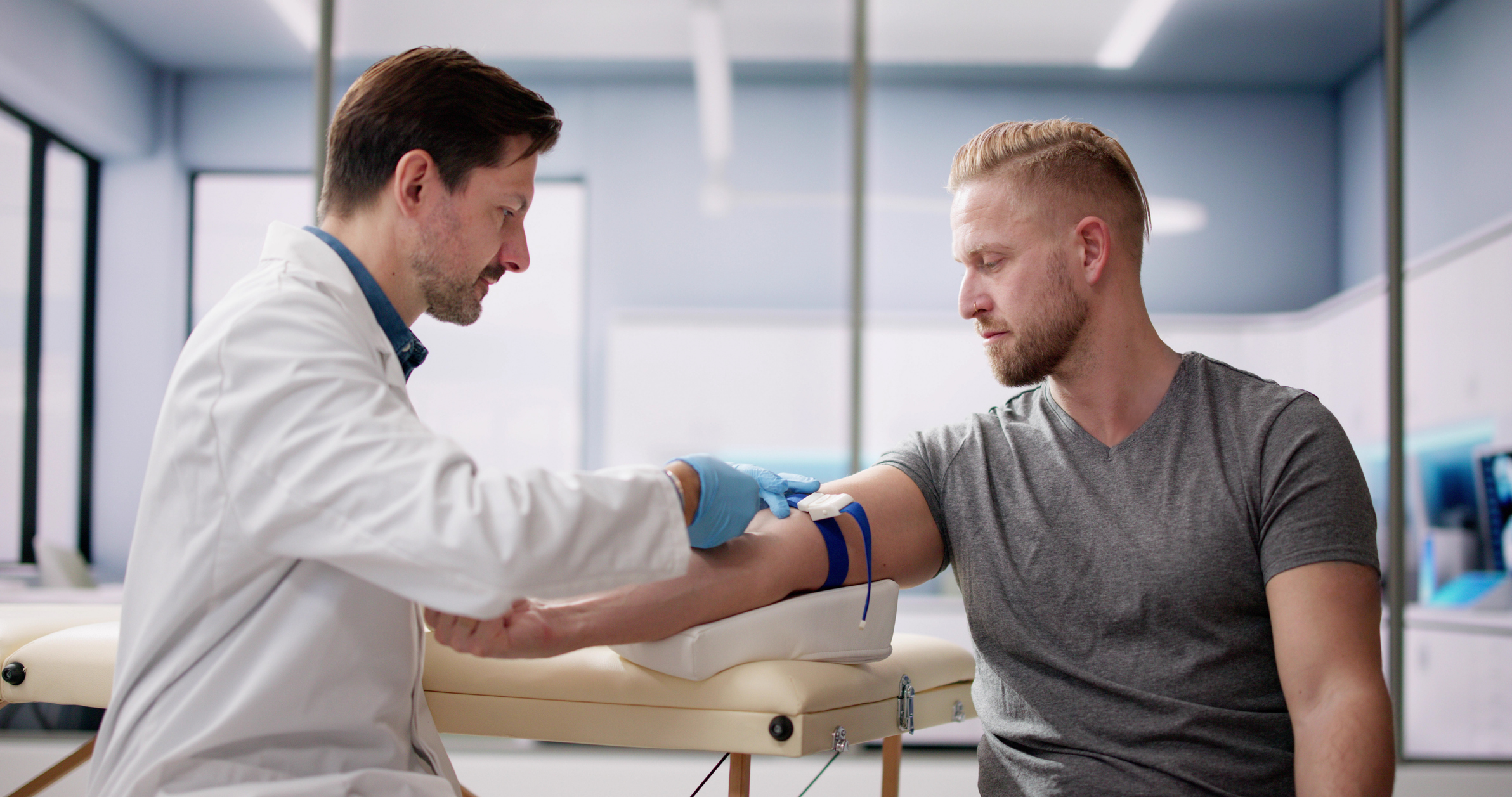Therapeutic Phlebotomy Treatment

Procedure explained:
A therapeutic phlebotomy is a procedure which involves inserting a needle through your skin into a vein and removing blood (up to 500cc) from your body. The procedure can take up to one hour. Your body will replace the fluid portion of your blood in a few hours and the red blood cells will be replaced over the course of a few days. IV fluids following the procedure may also be ordered. If there are no adverse symptoms, prior to discharge, you will be advised to avoid smoking for one hour, avoid strenuous activities for six to eight hours, avoid alcohol for 72 hours and stay well hydrated for 24 hours after the procedure.
Contact Us
Benefits of a therapeutic phlebotomy:
The condition you have been diagnosed with causes your body to overproduce red blood cells or iron. A phlebotomy will remove some of these cells thus relieving symptoms you may experience as a result of your condition (dizziness, memory loss, decreased oxygenation). Red blood cells take up more than half of blood volume and when they are elevated it takes more effort for your heart to move the blood.
Possible risks:
Although the risk of serious side effects is low when removing up to 500cc (about two cups) of blood from your body, you may experience a lower blood pressure for a short time. Low blood pressure can reduce the amount of oxygen circulating to your upper body including your brain which can cause faintness. Faintness usually occurs when you have not had enough to drink prior to the procedure. Faintness can be managed by lowering your head and/or lying down and elevating your legs or drinking fluids. An IV fluid infusion can also help manage faintness. In rare instances, the drop in blood pressure is severe as a result of the decreased blood flow to the brain with possible loss of consciousness and/or seizures and requires ambulance transport to the hospital. Persons with medical conditions such as heart or lung disease may be more sensitive to the loss of blood, and this could trigger an event related to these diseases with any of the possible risks of these diseases including death. Please be sure to discuss your health history with your physician.
Another common risk from phlebotomy is incomplete clotting when the needle is removed from the vein which causes blood to leak into the skin thus causing bruising or bleeding. Pressure to the site where the needle was inserted will control this and your body will usually heal without any lasting effects.
Uncommon risks from a phlebotomy include a risk of infection caused from viruses and bacteria that remain on your skin after disinfection. In rare instances, the bacteria can be introduced into your blood stream through the needle insertion causing severe infection. Another uncommon risk associated with therapeutic phlebotomy is irritation or damage to the nerve which is next to the blood vessel where the needle is inserted. This can cause temporary or permanent numbness, tingling, burning or pain.
Please discuss any questions or concerns you may have with your healthcare team.





Comments